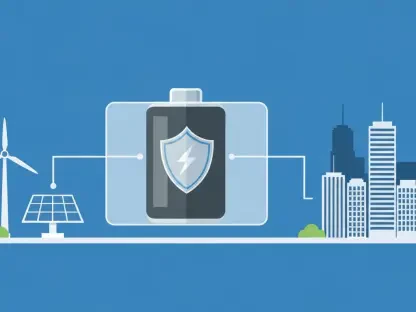In an era where artificial intelligence continues to reshape the landscape of site reliability engineering, Chloe Maraina stands at the forefront of these advancements. With her deep understanding of AI-driven DevOps and site reliability engineering, she is our guide today through the intricacies of Microsoft’s Azure SRE Agent. Known for her ability to translate data into actionable insights, Chloe provides valuable perspective on the innovative use of agentic AI in modern workflows.
What is the Azure SRE Agent, and what role does it play in site reliability engineering?
The Azure SRE Agent is an innovative tool designed to enhance how we manage production services. By leveraging AI, particularly reasoning with large language models, it helps automate some of the more routine tasks in site reliability engineering. It aims to streamline the process, allowing engineers to focus on more complex issues by taking over tasks like managing configurations or restarting servers.
How does the Azure SRE Agent utilize reasoning large language models to manage production services?
Reasoning large language models play a crucial role in the Azure SRE Agent by evaluating logs and system metrics to pinpoint root causes of issues. These models compare the current state of a system with best practices and desired configurations. This approach helps not just in identifying problems but also in suggesting precise, context-driven fixes before users experience any downtime.
Can you explain the concept of “agentic AI” and its application in workflows and site reliability engineering?
Agentic AI brings a new dimension to automation, moving beyond static processes to dynamic, context-aware workflows. In site reliability engineering, this means the AI can act proactively, initiating workflows based on real-time data and predefined rules. It integrates seamlessly with tools like Teams, adapting its actions according to current system states and making informed decisions that traditionally required human intervention.
What are some of the tasks that the Azure SRE Agent can automate in site reliability engineering?
The Azure SRE Agent shines in automating repetitive and time-consuming tasks such as server restarts, certificate rotations, and configuration management. It’s built to handle these routine processes efficiently, freeing up engineers to engage in more strategic problem solving and innovation within their roles.
How does the Azure SRE Agent differ from traditional chatbots in handling exceptions in business processes?
Unlike traditional chatbots, which often operate on predefined scripts, the Azure SRE Agent uses AI tools to manage responses within a closed knowledge domain. It’s adept at handling exceptions because it’s grounded in real-time data and escalates to human intervention when unexpected events arise, ensuring a seamless and reliable decision-making process.
What is the significance of the Model Context Protocol (MCP) in building workflows and managing operations?
The Model Context Protocol is pivotal as it defines the interfaces through which applications interact with AI agents. It facilitates the conversion of user intent into actionable service calls, allowing for a more effective and streamlined workflow creation. In managing operations, MCP enables the integration of best practices into automated processes, enhancing efficiency and reliability.
How are Azure SRE Agent’s functionalities grounded in real-time data from Azure resources?
The agent uses real-time data from Azure resources to maintain an accurate portrayal of the system’s state, supporting its decision-making process. This grounding ensures that the actions taken are relevant and timely, as the AI constantly evaluates metrics and logs to adaptively manage the system.
How does the agent use context to construct workflows based on best practices and desired system states?
By continuously analyzing the current system state against established best practices and desired configurations, the agent constructs workflows that are both effective and aligned with operational goals. This context-awareness allows it to make informed decisions, reducing the likelihood of errors and optimizing system performance.
Describe how the Azure monitoring tools and Fabric data lake contribute to the SRE dashboards.
Azure monitoring tools, coupled with the Fabric data lake, provide the necessary back-end support for SRE dashboards. They collect and store a vast amount of data that is critical for analyzing system performance. Using Kusto Query Language, this data is transformed into insightful reports and tables that help engineers quickly address and resolve issues.
How does the Azure SRE Agent perform root-cause analysis using alerts and system metrics?
The agent leverages alerts from Azure monitoring tools to initiate root-cause analysis automatically. It analyzes system metrics, correlates them with historical data, and uses AI models to identify patterns or anomalies that might indicate underlying issues. The result is a comprehensive analysis that pinpoints the issue’s origin and suggests potential solutions.
What role do Azure’s Adaptive Cards and Teams play in integrating the SRE Agent into existing workflows?
Azure’s Adaptive Cards and Teams act as connectors that integrate the SRE Agent into existing enterprise workflows. Adaptive Cards surface workflow elements in Teams chats, allowing users to interact with and control the processes the agent manages. This integration makes it easier for users to respond to reports, approve actions, and maintain a better overall workflow synergy.
How is the Azure SRE Agent designed to work with human-in-the-loop models for action approval?
The design philosophy of the Azure SRE Agent incorporates a human-in-the-loop model where human approval is required before any critical actions are executed. This approach enhances trust in the automation process by ensuring human oversight, allowing the agent to suggest actions but relying on human judgment for final decisions.
In what ways can the Azure SRE Agent visualize data, and how might this contribute to operations?
The agent can visualize data through the use of markup to create charts and graphs, making complex data more accessible and understandable. This visualization capability allows engineers to quickly grasp the current system state and trends, aiding in faster response times and more efficient operations management.
Discuss the process of recording discoveries and fixes to GitHub as part of a DevOps practice.
Recording discoveries and fixes to GitHub is integral to a robust DevOps practice. This process involves documenting the root-cause analysis, any issues identified, and the subsequent resolutions as GitHub issues. This documentation not only facilitates future investigations but also ensures that all stakeholders are informed and can contribute to long-term improvements.
What potential changes might improve the integration of the Azure SRE Agent within the broader service operations ecosystem?
Enhancing integration could involve expanding collaborations with other Azure services and improving interoperability with external tools. Increasing the intelligence of the agent’s reasoning models and enhancing its ability to interface across more diverse platforms would enable even more seamless integration within the broader operations ecosystem, promoting a more unified approach.
Can you outline the steps to get started with the Azure SRE Agent?
Getting started involves signing up for the gated public preview, after which you can access the documentation to understand its functionality. From there, you create an agent through the Azure Portal, assign it to an account and resource group, and select a region for operations. This setup allows you to start leveraging the agent’s capabilities to manage your environments efficiently.
How does the Azure SRE Agent interface currently operate within the Azure Portal?
The Azure SRE Agent currently operates within the Azure Portal, where site reliability engineers can interact with it to manage and monitor their systems. The portal provides a central location where users can access all of the agent’s features and integrate its functionality into their daily workflows.
Why is the delivery of reports as Power BI dashboards suggested for the Azure SRE Agent?
Delivering reports as Power BI dashboards offers enhanced visualization capabilities, making complex data more comprehensible. These dashboards provide a cohesive view of system health and performance, enabling teams to make more informed decisions and prioritize actions effectively.
What future evolutions might you anticipate for the Azure SRE Agent as Microsoft integrates deeper Azure capabilities?
I foresee the Azure SRE Agent evolving to include more advanced AI models and expanded functionality tailored to industry-specific needs. As Microsoft continues to deepen Azure’s capabilities, the agent will likely gain more sophisticated tools for analyzing larger datasets in real-time and providing even more accurate and predictive insights. Additionally, further integration with future Azure innovations will enhance its efficiency and scope, creating a more robust and versatile tool for site reliability engineering.









